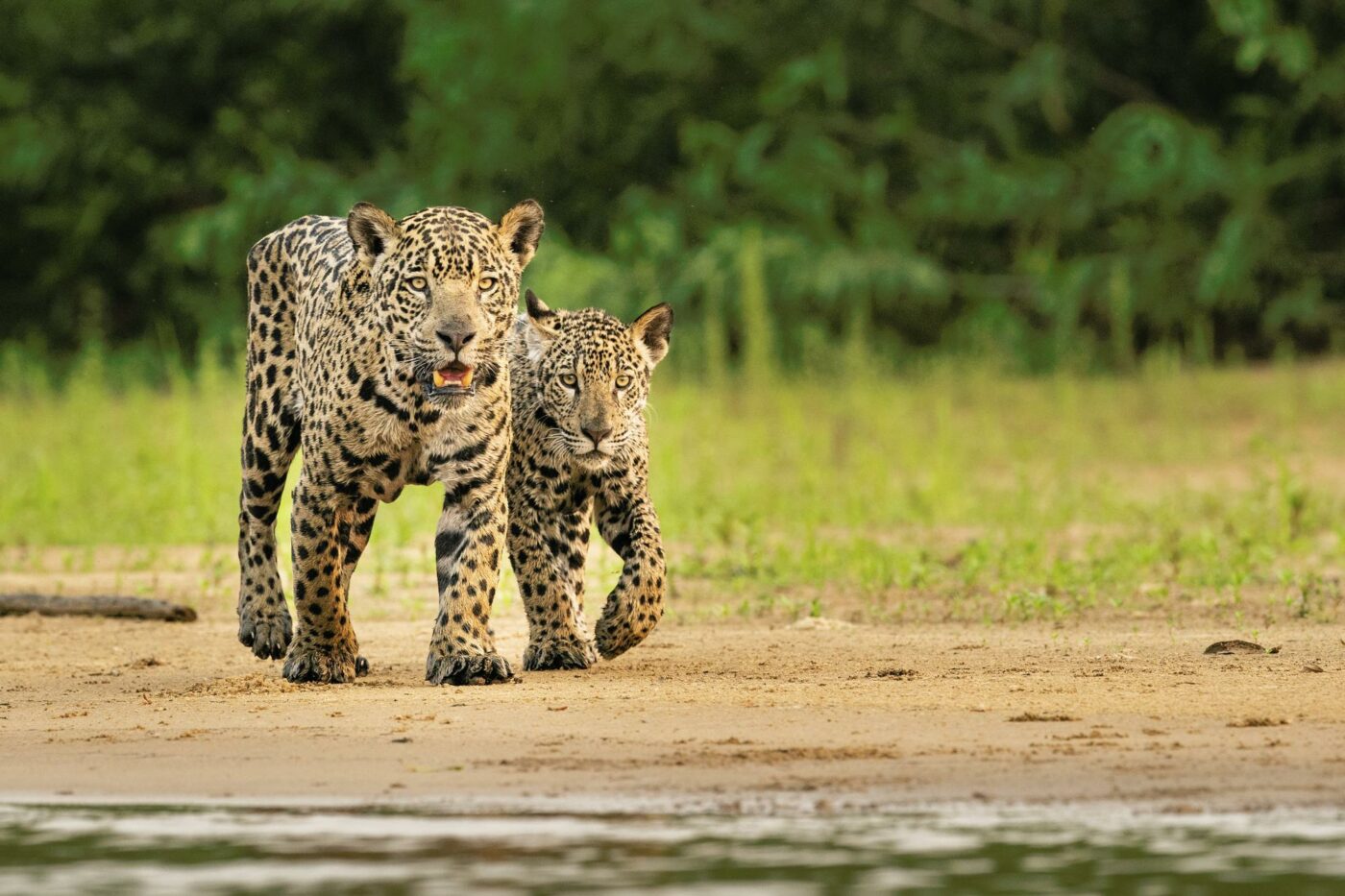Jaguar Conservation: Protecting Brazil’s Apex Predator and its Habitat

Deep within the diverse ecosystems of Brazil, a majestic and elusive predator roams – the jaguar (Panthera onca). As the largest big cat in the Americas, the jaguar holds a crucial position as an apex predator, maintaining the delicate balance of ecosystems. However, the jaguar faces numerous threats, and concerted conservation efforts are essential to protect both the species and the habitats it calls home.
The Significance of Jaguars in Brazilian Ecosystems:
Jaguars play a vital role in maintaining ecosystem health, influencing the abundance and behavior of their prey species. As apex predators, they help regulate the populations of herbivores, preventing overgrazing and maintaining the overall biodiversity of their habitats. Jaguars are also considered umbrella species – their conservation indirectly protects numerous other species and their habitats.
Habitat of the Jaguar:
Jaguars are highly adaptable and can be found in a variety of habitats, from dense rainforests and swamps to grasslands and scrublands. In Brazil, the Amazon Rainforest, the Pantanal Wetlands, and the Atlantic Forest are key strongholds for jaguar populations. Unfortunately, the widespread deforestation and habitat degradation in these regions threaten the jaguar’s ability to roam freely.
Threats to Jaguar Populations:
- Habitat Loss and Fragmentation:
- Deforestation for agriculture, logging, and infrastructure development leads to the fragmentation of jaguar habitats, restricting their movement and diminishing available prey.
- Human-Wildlife Conflict:
- As human settlements expand into jaguar territories, conflicts may arise. Jaguars may prey on livestock, leading to retaliatory killings by farmers attempting to protect their livelihoods.
- Poaching and Illegal Wildlife Trade:
- Jaguars are targeted for their stunning coats and body parts, fueling the illegal wildlife trade. Despite protective measures, poaching remains a significant threat to jaguar populations.
- Climate Change:
- Climate change poses indirect threats to jaguars by altering their habitats and affecting prey availability. Shifts in climate patterns can impact water sources, vegetation, and the distribution of species that jaguars rely on for food.
Conservation Initiatives:
- Protected Areas and Corridors:
- Establishing and expanding protected areas, such as national parks and reserves, provides safe havens for jaguars. Creating ecological corridors connecting these areas allows for genetic exchange and maintains healthy populations.
- Community Engagement:
- Involving local communities in jaguar conservation efforts is crucial. Community-based initiatives, education programs, and sustainable development projects foster coexistence and reduce human-wildlife conflicts.
- Anti-Poaching Measures:
- Strengthening anti-poaching efforts, implementing stricter regulations, and increasing law enforcement capabilities are essential to combat the illegal trade in jaguar parts and products.
- Research and Monitoring:
- Ongoing research on jaguar behavior, population dynamics, and habitat use informs conservation strategies. Monitoring programs use advanced technologies such as camera traps and satellite tracking to gather crucial data.
- Climate Resilience Strategies:
- Integrating climate change considerations into conservation plans helps mitigate its impact on jaguar habitats. This includes protecting key areas, promoting habitat connectivity, and supporting sustainable land-use practices.
Success Stories and Challenges:
Several success stories highlight the positive impact of conservation efforts. However, challenges persist, and a holistic approach that addresses the root causes of threats is crucial. Sustainable development, international collaboration, and continued research are essential components of ensuring the long-term survival of jaguar populations in Brazil.
As Brazil’s apex predator, the jaguar symbolizes the resilience and biodiversity of its ecosystems. Protecting this magnificent species requires a collaborative effort that spans local communities, governments, conservation organizations, and the global community. By safeguarding jaguar habitats, mitigating threats, and fostering coexistence, we can ensure that the roar of the jaguar continues to echo through the wild landscapes of Brazil for generations to come.

